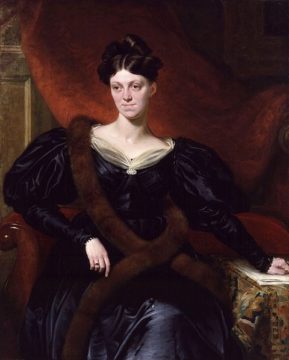Howard Zinn in Delancey Place:
 After the Revolution in the United States, American society coalesced around controlling women’s behavior and sexual activity while exploiting their labor. Women’s “reduced rate,” or free labor in the case of slaves, was critical to the growing economy. And they were coerced, compelled, and conditioned to be meekly submissive. They were encouraged to “not expect too much”:
After the Revolution in the United States, American society coalesced around controlling women’s behavior and sexual activity while exploiting their labor. Women’s “reduced rate,” or free labor in the case of slaves, was critical to the growing economy. And they were coerced, compelled, and conditioned to be meekly submissive. They were encouraged to “not expect too much”:
“[A]fter the Revolution, none of the new state constitutions granted women the right to vote, except for New Jersey, and that state rescinded the right in 1807. New York’s constitution specifically disfranchised women by using the word ‘male.’
While perhaps 90 percent of the white male population were literate around 1750, only 40 percent of the women were. Working-class women had little means of communicating, and no means of recording whatever sentiments of rebelliousness they may have felt at their subordination. Not only were they bearing children in great numbers, under great hardships, but they were working in the home. Around the time of the Declaration of Independence, four thousand women and children in Philadelphia were spinning at home for local plants under the ‘putting out’ system. Women also were shopkeepers and innkeepers and engaged in many trades. They were bakers, tinworkers, brewers, tanners, ropemakers, lumberjacks, printers, morticians, woodworkers, staymakers, and more. Ideas of female equality were in the air during and after the Revolution. Tom Paine spoke out for the equal rights of women. And the pioneering book of Mary Wollstonecraft in England, A Vindication of the Rights of Women, was reprinted in the United States shortly after the Revolutionary War.
Wollstonecraft was responding to the English conservative and opponent of the French Revolution, Edmund Burke, who had written in his Reflections on the Revolution in France that ‘a woman is but an animal, and an animal not of the highest order.’
More here.
